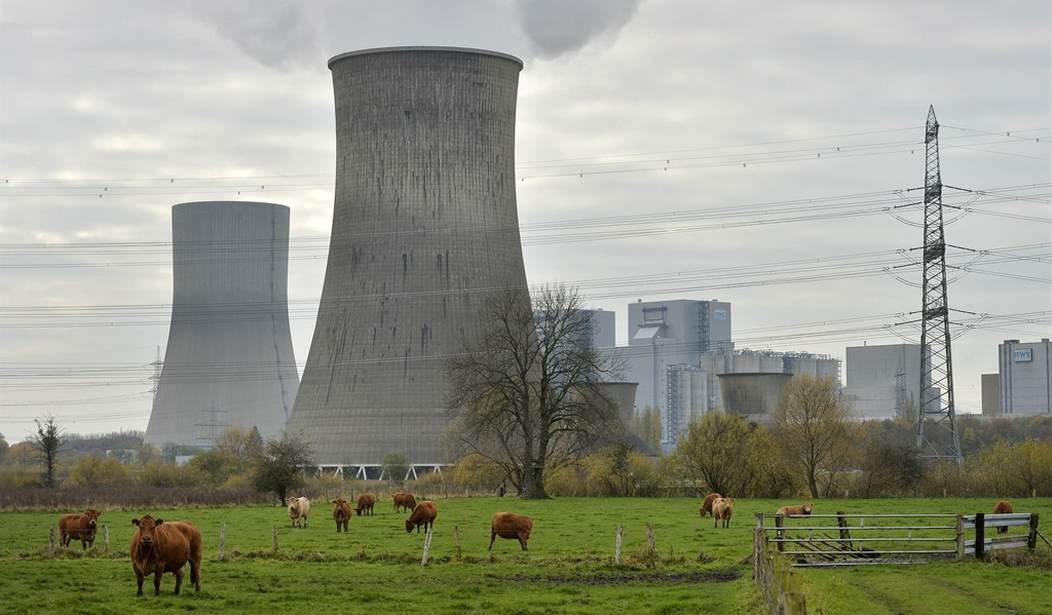Americans may look back in a few decades and see that 2007 was the year that production of electricity peaked in the United States and our nation began powering down.
This may make many on the environmentalist left -- including President Barack Obama's top science and technology adviser -- very happy.
But it will not make life better for you, your children or your grandchildren.
According to data published by the Energy Information Administration, the United States generated a total of approximately 4,157 billion kilowatt-hours of electricity in 2007. We had never produced that much before. We have never produced that much since.
In 2012, the last full year for which there is data, the United States produced 4,048 billion kilowatt-hours of electricity -- down 2.6 percent from 2007.
In the first nine months of 2013, the United States produced 3,078 billion kilowatt-hours of electricity -- down from the 3,096 the United States produced in first nine months of 2012.
The shift in the long-term trend in U.S. electricity production becomes more obvious when viewed on a per capita basis.
I took the EIA's numbers for annual total net electricity generation in the United States, which go back to 1949, and divided them by the Census Bureau's estimates for the U.S. population in July of each year.
In 1950, the U.S. produced approximately 334,088 million kilowatt-hours of electricity for a population of 152,271,417. That works out to 0.00219 million kilowatt-hours of electricity per person.
Recommended
In 1959, the U.S. produced approximately 713,379 million kilowatt-hours of electricity for a population of 177,829,628. That was 0.00401 million kilowatt-hours of electricity per person.
In the ten years from 1950 through 1959, U.S. per capita electricity production increased by 0.00182 -- or 83.1 percent.
America in the 1950s was powering up.
From 1960 to 1969, per capita electricity production increased 69.8 percent. America was still powering up -- but not as aggressively as in the 1950s.
From 1970 to1979, per capita electricity production grew by 33.6 percent. From 1980 to 1989, it grew by 19.3 percent. And, from 1990 to 1999, it grew by 11.3 percent. But from 2000 to 2009, it declined by 4.4 percent.
Per capita electricity production in this country peaked in 2007, the same year electricity production itself peaked. That year, the United States generated 4,156,745 million kilowatt-hours for a population of 301,231,207 -- a per capita production of about 0.01379 million kilowatt hours.
In 2012, the United States produced 4,047,765 million kilowatt-hours of electricity for 313,914,040 people -- or 0.01289 million kilowatt-hours per capita. Per capita electricity production has declined 6.5 percent from its peak of 2007.
In December 2013, according to the Bureau of Labor Statistics, the seasonally adjusted electricity price index hit a record high of 203.186.
In the seventeen years from January 1952 to January 1969, when America was ramping up per capita electricity production, the electricity price index rose from 27.5 to 30.2 -- an increase of only 9.8 percent.
In the seventeen years from December 1996 to December 2013, the energy price index rose from 132.2 to 203.186 -- an increase of about 53.7 percent.
Americans in 1950 were looking forward to producing more people and more electricity and becoming a much wealthier nation.
What do the environmentalists who occupy our White House in 2013 envision?
John P. Holdren, director of the White House Office of Science and Technology Policy, joined in 1995 with Paul Ehrlich, the author of "The Population Bomb," and Gretchen Daily of Stanford's Center for Conservation Biology, to co-author a chapter in a book published by the World Bank. The chapter was entitled, "The Meaning of Sustainability: Biogeophysical Aspects."
"We know for certain, for example, that: No form of material growth (including population growth) other than asymptotic growth, is sustainable," Obama's future science adviser pronounced with this co-authors.
"Many of the practices inadequately supporting today's population of 5.5 billion people are unsustainable; and [a]t the sustainability limit, there will be a tradeoff between population and energy-matter throughput per person, hence, ultimately, between economic activity per person and well-being per person," said Holdren and his co-authors.
"This," they concluded, "is enough to say quite a lot about what needs to be faced up to eventually (a world of zero net physical growth), what should be done now (change unsustainable practices, reduce excessive material consumption, slow down population growth), and what the penalty will be for postponing attention to population limitation (lower well-being per person)."
As President Obama moves forward with his plans for America's future energy production and economic well-being, Americans should remember that Obama's science and technology adviser declared 19 years ago that "a world of zero net physical growth" was something that "needs to be faced up to eventually."
























Join the conversation as a VIP Member